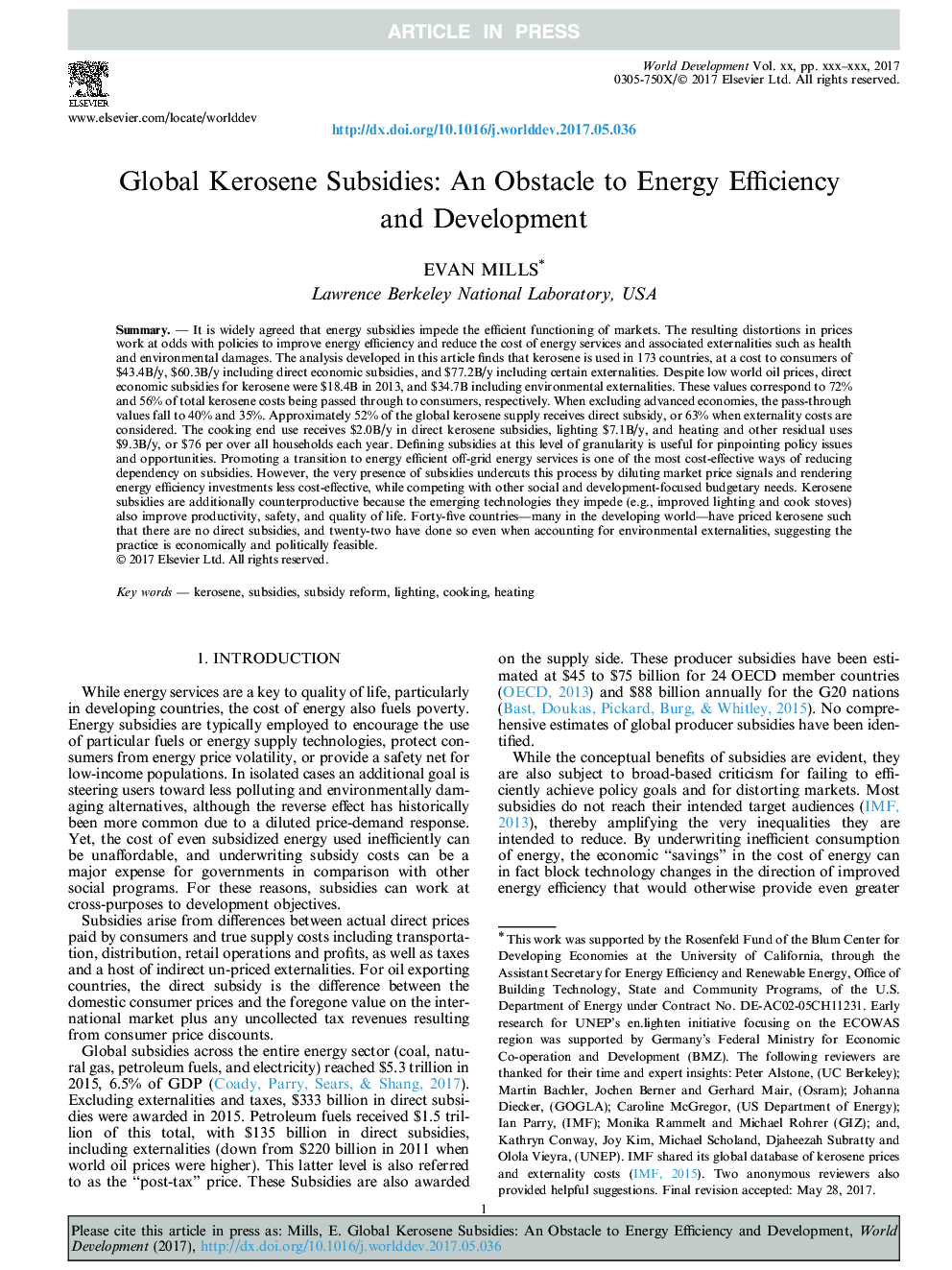| کد مقاله | کد نشریه | سال انتشار | مقاله انگلیسی | نسخه تمام متن |
|---|---|---|---|---|
| 5105116 | 1481119 | 2017 | 18 صفحه PDF | دانلود رایگان |
عنوان انگلیسی مقاله ISI
Global Kerosene Subsidies: An Obstacle to Energy Efficiency and Development
ترجمه فارسی عنوان
کمک های جهانی نفتی: موانعی برای افزایش بهره وری انرژی
دانلود مقاله + سفارش ترجمه
دانلود مقاله ISI انگلیسی
رایگان برای ایرانیان
کلمات کلیدی
نفت سفید یارانه ها، اصلاحات یارانه، روشنایی، آشپزی، حرارت دادن،
موضوعات مرتبط
علوم انسانی و اجتماعی
اقتصاد، اقتصادسنجی و امور مالی
اقتصاد و اقتصادسنجی
چکیده انگلیسی
It is widely agreed that energy subsidies impede the efficient functioning of markets. The resulting distortions in prices work at odds with policies to improve energy efficiency and reduce the cost of energy services and associated externalities such as health and environmental damages. The analysis developed in this article finds that kerosene is used in 173 countries, at a cost to consumers of $43.4B/y, $60.3B/y including direct economic subsidies, and $77.2B/y including certain externalities. Despite low world oil prices, direct economic subsidies for kerosene were $18.4B in 2013, and $34.7B including environmental externalities. These values correspond to 72% and 56% of total kerosene costs being passed through to consumers, respectively. When excluding advanced economies, the pass-through values fall to 40% and 35%. Approximately 52% of the global kerosene supply receives direct subsidy, or 63% when externality costs are considered. The cooking end use receives $2.0B/y in direct kerosene subsidies, lighting $7.1B/y, and heating and other residual uses $9.3B/y, or $76 per over all households each year. Defining subsidies at this level of granularity is useful for pinpointing policy issues and opportunities. Promoting a transition to energy efficient off-grid energy services is one of the most cost-effective ways of reducing dependency on subsidies. However, the very presence of subsidies undercuts this process by diluting market price signals and rendering energy efficiency investments less cost-effective, while competing with other social and development-focused budgetary needs. Kerosene subsidies are additionally counterproductive because the emerging technologies they impede (e.g., improved lighting and cook stoves) also improve productivity, safety, and quality of life. Forty-five countries-many in the developing world-have priced kerosene such that there are no direct subsidies, and twenty-two have done so even when accounting for environmental externalities, suggesting the practice is economically and politically feasible.
ناشر
Database: Elsevier - ScienceDirect (ساینس دایرکت)
Journal: World Development - Volume 99, November 2017, Pages 463-480
Journal: World Development - Volume 99, November 2017, Pages 463-480
نویسندگان
Evan Mills,
